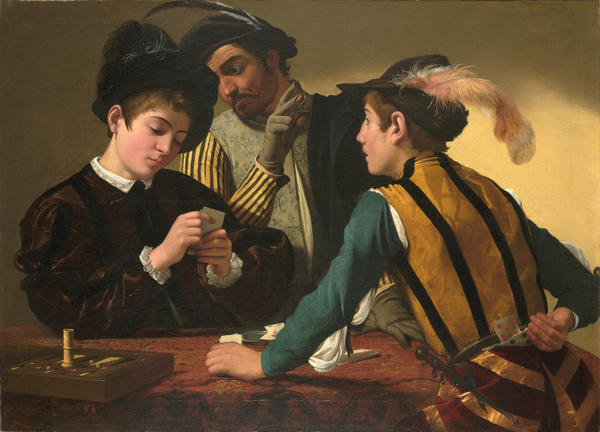Practical tips to sellers when consigning items to an auction house

Michelangelo Merisi da Caravaggio 'The Cardsharps' currently on display at the Kimbell Museum, Fort Worth, Texas.
Lessons learned from the case of Thwaytes v Sotheby’s.
In 2006 Mr Thwaytes consigned a painting, the Cardsharps, to Sotheby’s for further investigation. Sotheby’s advised it was a good 17th Century copy of the original by Caravaggio and the painting was sold at auction for a hammer price of £42,000 to a leading Caravaggio scholar, Sir Denis Mahon, who later announced that he and others believed it to be by Caravaggio, and therefore worth far more.
Mr Thwaytes brought proceedings against Sotheby’s alleging a failure to adequately research the painting and to advise that it had ‘Caravaggio potential’. One issue at trial was the standard of care owed by Sotheby’s to consignors and whether Mr Thwaytes’ instructions to Sotheby’s affected that duty.
Mr Thwaytes sent a letter stating “As far as the Cardsharps is concerned this is going to be researched and studied with both infra red and possibly x-rayed…” addressed to the person at Sotheby’s who had seen the painting at his home and sent it to London. The Judge found that this did not constitute an instruction to Sotheby’s to undertake infra-red testing and that if Mr Thwaytes had really intended to instruct Sotheby’s to carry out infra-red, he would have contacted the Old Masters Department where the painting was sent after leaving his home. The Judge found that Sotheby’s were not under any obligation to either carry out infra-red analysis or to advise Mr Thwaytes that it should be carried out, even though Mr Thwaytes had stressed that he wanted to be sure of the painting’s status. This demonstrates how a consignor’s instructions can potentially affect the legal standard of care owed to him by an auction house.
Ultimately the Judge found that Sotheby’s were not negligent in their assessment of the painting. Whilst the decision is highly fact specific, the Judgment highlights that there can be a mismatch between what consignors expect from an auction house and what they are legally required to do.
Below are some practical points to consider when instructing an auction house to research or sell your property.
Key points when consigning an item to an auction house
- Consignee: Consider which auction house is right for you. Whether they will accept an item will depend on its value. Different auction houses have strengths in different fields and also offer varying financial terms. To obtain the best deal visit more than one auction house and be prepared to negotiate. Also consider whether the item would be better sold privately through a dealer.
- Information: Give the auction house as much relevant information as you have about the item. For example, you may have information about provenance, such as the name of the previous owner, which may be significant and which the auction house may not otherwise discover.
- Instructions: Communicate your expectations explicitly, in writing, to the correct person. For example, if you would like the auction house to undertake a specific type of research or analysis, ensure that you communicate this clearly. Keep notes of your telephone conversations and keep copies of all correspondence. The auction house may pass on charges for certain types of research to you and this should be discussed and agreed in advance.
- Location: Discuss the most suitable auction and date to sell your item. Auction houses are experienced in placing items in the right auctions, in the right locations. These choices can have a significant effect on the amount obtained, as demand for certain items and competition between buyers can vary.
- Timing: Consign the item in sufficient time for the right sale. Whether an item can be included in a sale will depend upon when it is consigned. It may be that the catalogue has been finalised or restoration needs to be undertaken before the item is ready for sale. Discuss deadlines in advance to ensure that the item can be included in the most favourable sale, particularly if the item needs to be sold quickly.
- Price: Discuss the estimate with the auction house and ensure that you are happy with the reserve. After examining and researching the item, the auction house will put a high and a low estimate on the item, which is published in the auction catalogue as a guide for prospective buyers. In advance of the sale you can confidentially agree a price below which an item will not be sold (known as the reserve). Note that a reserve price cannot exceed the low estimate.
Rebecca Foden is a solicitor in the Arts team at Boodle Hatfield. Boodle Hatfield represented Mr Thwaytes in his dispute with Sotheby’s. She can be reached by email: [email protected]. Visit http://artlawandmore.com.